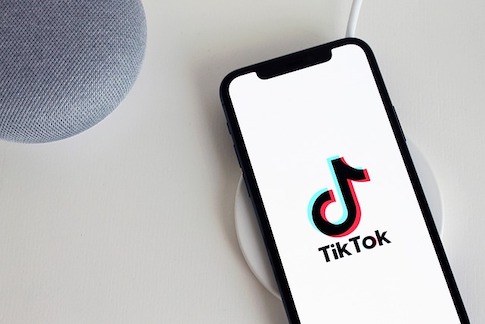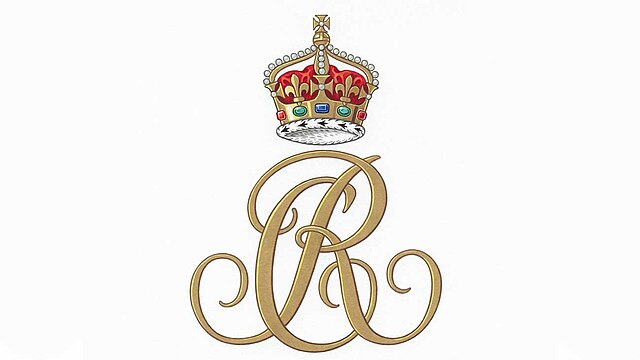In an exciting discovery, a document that was thought to be just a copy of the Magna Carta has been confirmed as an original. This important finding happened at the Harvard Law School Library, where the document was bought in 1946 for just $27.50 from a London bookshop called Sweet & Maxwell. The library believed it was a faded copy from 1327, during King Edward III’s reign, but it turns out they were wrong.
The bookshop had actually bought this document just a month earlier at a Sotheby’s auction, paying £42 to a pilot who served in World War I. Because it was misdated, the document was thought to be a copy, which hid its true historical importance. Recent research has shown that this document is a rare original Magna Carta issued in 1300 by King Edward I, making it worth millions of dollars.
The discovery was made by David Carpenter, a professor of medieval history at King’s College London. While looking at online versions of the Magna Carta in December 2023, he noticed that the document on Harvard’s website might be the real deal. Curious, he carefully examined it, comparing the text and doing tests to confirm that it was indeed authentic.
The Magna Carta was first created in 1215 under King John and is a key legal document that explains the rights of regular people under common law. It is important because it helped limit the power of kings and established that everyone, including the king, must follow the law. The 1300 version owned by Harvard Law School adds even more to the history of this document and its impact on legal rights. Even though the document is now very valuable, Harvard Law School plans to keep it safe instead of selling it, as it represents a significant part of history.
Original news source: Magna Carta ‘copy’ miscatalogued in 1940s found to be original (Sky News)
🎧 Listen:
Slow
Normal
Fast
📖 Vocabulary:
| 1 | discovery | Finding something new or unknown |
| 2 | confirmed | Proved to be true or correct |
| 3 | document | A piece of written or printed information |
| 4 | auction | A public sale where items are sold to the highest bidder |
| 5 | pilot | A person who operates an aircraft |
| 6 | misdated | Given the wrong date |
| 7 | historical | Related to the past or history |
| 8 | research | Careful study to find out more about something |
| 9 | medieval | Related to the Middle Ages, a period in European history |
| 10 | authentic | Real or genuine |
| 11 | established | Set up or created something that lasts |
| 12 | impact | The effect or influence of something |
| 13 | valuable | Worth a lot of money or importance |
| 14 | significant | Important or meaningful |
| 15 | rights | Legal entitlements or freedoms that people have |
Group or Classroom Activities
Warm-up Activities:
– CHARADES
Instructions: Students will take turns acting out key terms or phrases related to the Magna Carta and its historical significance without speaking. The rest of the class will guess what is being acted out. Terms can include “King John,” “legal rights,” “original document,” etc.
– OPINION POLL
Instructions: Divide students into small groups and give them a list of statements related to the importance of historical documents and their relevance today (e.g., “Historical documents should be preserved for future generations”). Students will discuss and vote on their opinions, then share their group’s findings with the class.
– HEADLINE CREATION
Instructions: Ask students to create catchy headlines that could be used for a newspaper article about the discovery of the original Magna Carta. They should think about what aspects of the story are most newsworthy and present their headlines to the class.
– MIND MAP
Instructions: In pairs, students will create a mind map on a large piece of paper or a whiteboard that explores the significance of the Magna Carta. They should include branches for its historical context, key figures, main ideas, and its impact on legal rights today.
– TWO TRUTHS AND A LIE
Instructions: Each student will come up with two true statements and one false statement about the Magna Carta and its recent discovery. They will then share their statements with a partner, who will have to guess which one is the lie. Afterward, students can share some of their statements with the class.
🤔 Comprehension Questions:
1. What was the initial belief about the document found at Harvard Law School Library?
2. How much did Harvard Law School pay for the document in 1946?
3. Who was the professor that discovered the document’s true identity, and where does he work?
4. What historical significance does the Magna Carta have in relation to the power of kings?
5. In what year was the original Magna Carta that Harvard owns issued?
6. What mistake led to the document being misidentified as a copy instead of an original?
7. Why does Harvard Law School choose to keep the document instead of selling it?
8. How did David Carpenter confirm that the document was authentic?
Go to answers ⇩
🎧✍️ Listen and Fill in the Gaps:
In an (1)______ discovery, a document that was thought to be just a copy of the Magna (2)______ has been confirmed as an original. This important finding happened at the Harvard Law (3)______ Library, where the document was bought in 1946 for just $27.50 from a London bookshop called Sweet & Maxwell. The (4)______ believed it was a faded copy from 1327, during King Edward III’s reign, but it turns out they were wrong.
The bookshop had actually bought this (5)______ just a month earlier at a Sotheby’s auction, paying £42 to a pilot who served in World War I. Because it was misdated, the document was (6)______ to be a copy, which hid its true historical importance. Recent research has shown that this document is a rare original Magna Carta (7)______ in 1300 by King Edward I, making it (8)______ millions of dollars.
The discovery was made by David Carpenter, a professor of medieval (9)______ at King’s College London. While looking at online versions of the Magna Carta in December 2023, he noticed that the document on Harvard’s website might be the real deal. Curious, he carefully examined it, (10)______ the text and (11)______ tests to confirm that it was indeed (12)______.
The Magna Carta was first created in 1215 under King John and is a key legal document that explains the rights of regular people under common law. It is (13)______ because it helped limit the (14)______ of (15)______ and established that everyone, including the king, must follow the law. The 1300 version (16)______ by Harvard Law School adds even more to the history of this document and its impact on legal rights. Even though the document is now very valuable, Harvard Law School plans to keep it safe instead of selling it, as it represents a significant part of history.
Go to answers ⇩
💬 Discussion Questions:
Students can ask a partner these questions, or discuss them as a group.
1. What is the Magna Carta, and why do you think it is considered an important document in history?
2. How would you feel if you discovered a valuable historical document in your school or community?
3. Do you think it is important for schools to preserve historical documents? Why or why not?
4. What do you think should be done with valuable historical artifacts? Should they be sold or kept in museums?
5. How do you think the discovery of the original Magna Carta will change people’s understanding of history?
6. Do you like learning about history? Why or why not?
7. What is a historical figure you admire, and what do you think makes them important?
8. How would you feel if you were the professor who discovered the original Magna Carta?
9. Do you think it is important for people to know about their legal rights? Why?
10. What is a law in your country that you think is particularly important? Why do you think it matters?
11. How would you feel if you had the chance to see the original Magna Carta in person?
12. Do you think technology, like online research, makes it easier to discover historical facts? Why or why not?
13. What role do you think libraries play in preserving history and culture?
14. How do you think history can impact our lives today?
15. Do you think that the value of historical documents should be measured in money? Why or why not?
Individual Activities
📖💭 Vocabulary Meanings:
Match each word to its meaning.
Words:
1. discovery
2. confirmed
3. document
4. auction
5. pilot
6. misdated
7. historical
8. research
9. medieval
10. authentic
11. established
12. impact
13. valuable
14. significant
15. rights
Meanings:
(A) Important or meaningful
(B) Proved to be true or correct
(C) Worth a lot of money or importance
(D) The effect or influence of something
(E) A public sale where items are sold to the highest bidder
(F) A piece of written or printed information
(G) Real or genuine
(H) Finding something new or unknown
(I) Careful study to find out more about something
(J) A person who operates an aircraft
(K) Given the wrong date
(L) Legal entitlements or freedoms that people have
(M) Related to the past or history
(N) Set up or created something that lasts
(O) Related to the Middle Ages, a period in European history
Go to answers ⇩
🔡 Multiple Choice Questions:
1. Where was the original Magna Carta document discovered?
(a) Harvard Law School Library
(b) Oxford University
(c) British Museum
(d) London Bookshop
2. In what year was the document purchased by Harvard Law School?
(a) 1950
(b) 1946
(c) 1930
(d) 1965
3. Who was the professor that confirmed the document’s authenticity?
(a) John Smith
(b) Michael Johnson
(c) David Carpenter
(d) Sarah Brown
4. What was the initial belief about the document before it was confirmed as original?
(a) It was a fake
(b) It was a modern reproduction
(c) It was a faded copy from 1327
(d) It was an original from 1215
5. What significant historical figure issued the original Magna Carta in 1300?
(a) King John
(b) King Henry VIII
(c) King Edward III
(d) King Edward I
6. How much did the bookshop pay for the document at the auction?
(a) £100
(b) £42
(c) £27.50
(d) £75
7. What does the Magna Carta primarily explain?
(a) The rights of regular people under common law
(b) The history of the monarchy
(c) The rules of war
(d) The rights of the nobility
8. What is Harvard Law School’s plan for the document now that it is confirmed as original?
(a) To sell it
(b) To display it publicly
(c) To donate it to another institution
(d) To keep it safe
Go to answers ⇩
🕵️ True or False Questions:
1. The document was purchased by the Harvard Law School Library in 1946 for $27.50.
2. A document believed to be an original Magna Carta was revealed to be a copy.
3. Harvard Law School plans to sell the document instead of keeping it safe.
4. The library originally believed the document was a faded copy from 1327.
5. The Magna Carta was first created in 1215 under King John and is an important legal document.
6. David Carpenter, a professor of contemporary history, confirmed the document’s authenticity.
7. The document is a rare original Magna Carta issued in 1300 by King Edward I.
8. The bookshop that sold the document bought it at a Christie’s auction for £42.
Go to answers ⇩
📝 Write a Summary:
Write a summary of this news article in two sentences.
Check your writing now with the best free AI for English writing!
Writing Questions:
Answer the following questions. Write as much as you can for each answer.
Check your answers with our free English writing assistant!
1. What was the original belief about the document found at Harvard Law School?
2. How much did Harvard Law School pay for the document in 1946?
3. Who discovered that the document was an original Magna Carta, and what was his profession?
4. Why is the Magna Carta considered an important legal document?
5. What does Harvard Law School plan to do with the document now that it is confirmed to be authentic?
✅ Answers
🤔✅ Comprehension Question Answers:
1. What was the initial belief about the document found at Harvard Law School Library?
The initial belief was that the document was just a faded copy of the Magna Carta from 1327.
2. How much did Harvard Law School pay for the document in 1946?
Harvard Law School paid $27.50 for the document in 1946.
3. Who was the professor that discovered the document’s true identity, and where does he work?
The professor is David Carpenter, and he works at King’s College London.
4. What historical significance does the Magna Carta have in relation to the power of kings?
The Magna Carta is significant because it helped limit the power of kings and established that everyone, including the king, must follow the law.
5. In what year was the original Magna Carta that Harvard owns issued?
The original Magna Carta that Harvard owns was issued in 1300.
6. What mistake led to the document being misidentified as a copy instead of an original?
The document was misidentified as a copy because it was misdated, leading people to believe it was a faded copy from 1327.
7. Why does Harvard Law School choose to keep the document instead of selling it?
Harvard Law School chooses to keep the document because it represents a significant part of history.
8. How did David Carpenter confirm that the document was authentic?
David Carpenter confirmed the document’s authenticity by carefully examining it, comparing the text, and doing tests.
Go back to questions ⇧
🎧✍️✅ Listen and Fill in the Gaps Answers:
(1) exciting
(2) Carta
(3) School
(4) library
(5) document
(6) thought
(7) issued
(8) worth
(9) history
(10) comparing
(11) doing
(12) authentic
(13) important
(14) power
(15) kings
(16) owned
Go back to questions ⇧
📖💭✅ Vocabulary Meanings Answers:
1. discovery
Answer: (H) Finding something new or unknown
2. confirmed
Answer: (B) Proved to be true or correct
3. document
Answer: (F) A piece of written or printed information
4. auction
Answer: (E) A public sale where items are sold to the highest bidder
5. pilot
Answer: (J) A person who operates an aircraft
6. misdated
Answer: (K) Given the wrong date
7. historical
Answer: (M) Related to the past or history
8. research
Answer: (I) Careful study to find out more about something
9. medieval
Answer: (O) Related to the Middle Ages, a period in European history
10. authentic
Answer: (G) Real or genuine
11. established
Answer: (N) Set up or created something that lasts
12. impact
Answer: (D) The effect or influence of something
13. valuable
Answer: (C) Worth a lot of money or importance
14. significant
Answer: (A) Important or meaningful
15. rights
Answer: (L) Legal entitlements or freedoms that people have
Go back to questions ⇧
🔡✅ Multiple Choice Answers:
1. Where was the original Magna Carta document discovered?
Answer: (a) Harvard Law School Library
2. In what year was the document purchased by Harvard Law School?
Answer: (b) 1946
3. Who was the professor that confirmed the document’s authenticity?
Answer: (c) David Carpenter
4. What was the initial belief about the document before it was confirmed as original?
Answer: (c) It was a faded copy from 1327
5. What significant historical figure issued the original Magna Carta in 1300?
Answer: (d) King Edward I
6. How much did the bookshop pay for the document at the auction?
Answer: (b) £42
7. What does the Magna Carta primarily explain?
Answer: (a) The rights of regular people under common law
8. What is Harvard Law School’s plan for the document now that it is confirmed as original?
Answer: (d) To keep it safe
Go back to questions ⇧
🕵️✅ True or False Answers:
1. The document was purchased by the Harvard Law School Library in 1946 for $27.50. (Answer: True)
2. A document believed to be an original Magna Carta was revealed to be a copy. (Answer: False)
3. Harvard Law School plans to sell the document instead of keeping it safe. (Answer: False)
4. The library originally believed the document was a faded copy from 1327. (Answer: True)
5. The Magna Carta was first created in 1215 under King John and is an important legal document. (Answer: True)
6. David Carpenter, a professor of contemporary history, confirmed the document’s authenticity. (Answer: False)
7. The document is a rare original Magna Carta issued in 1300 by King Edward I. (Answer: True)
8. The bookshop that sold the document bought it at a Christie’s auction for £42. (Answer: False)
Go back to questions ⇧













